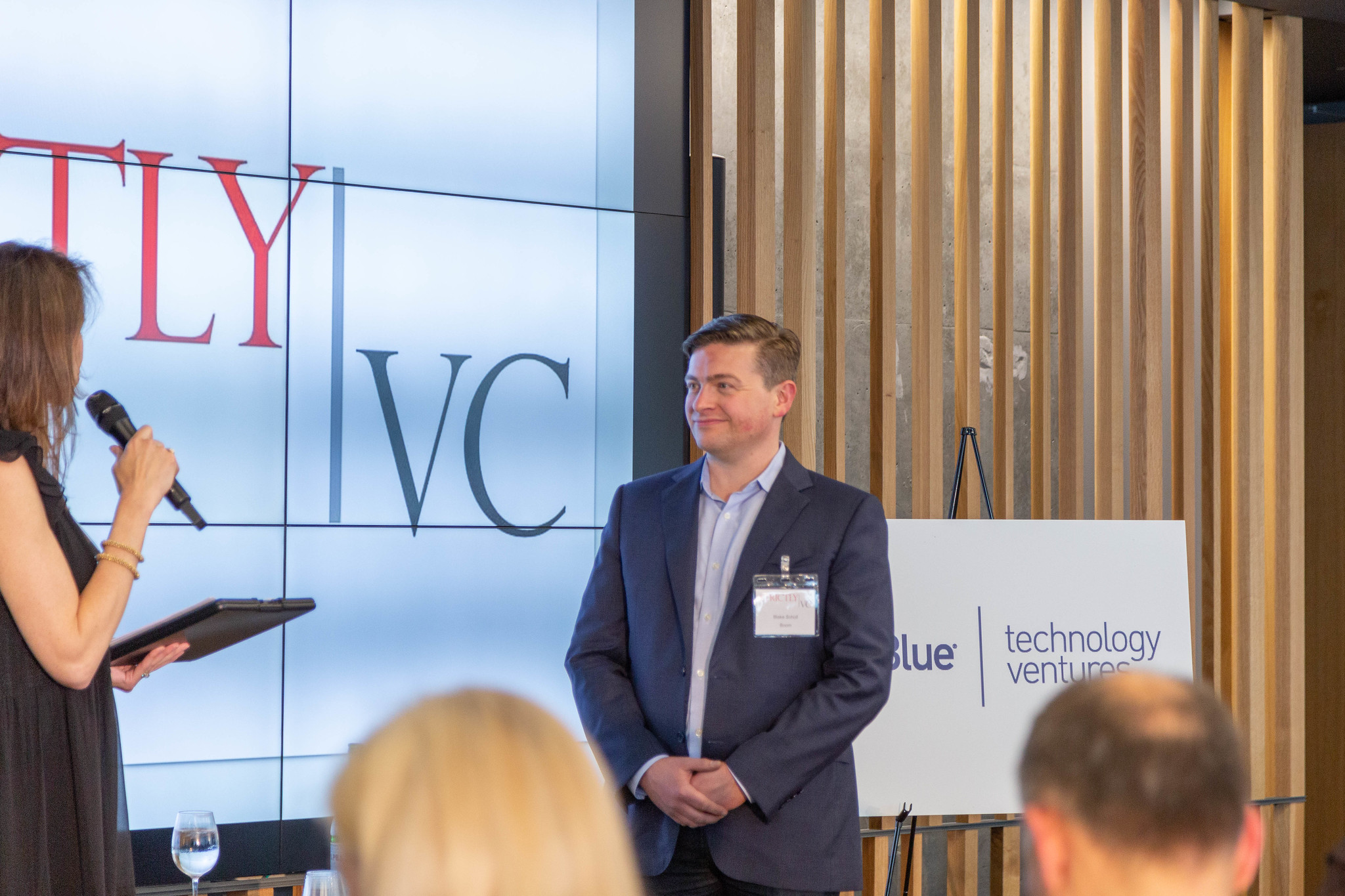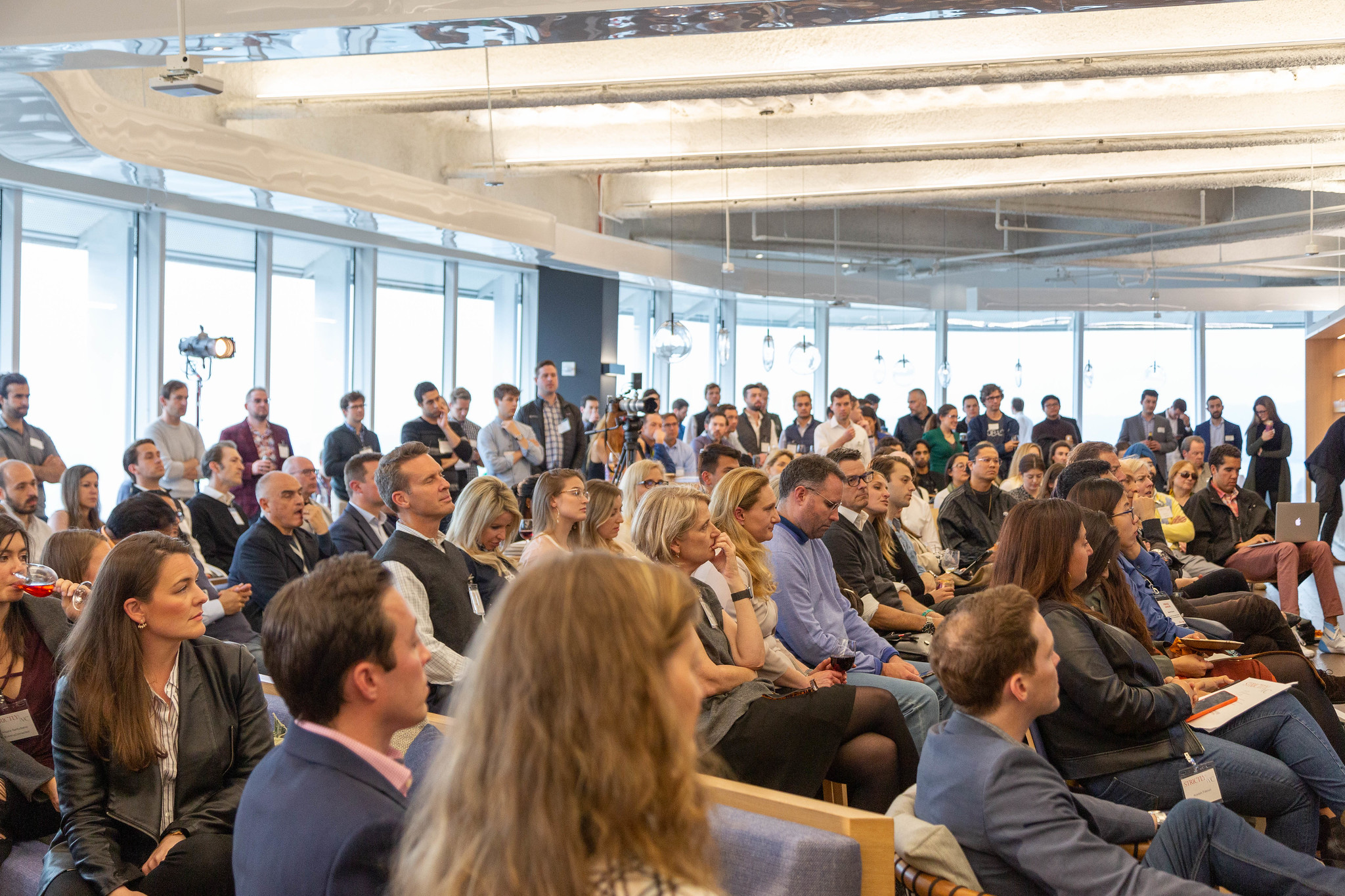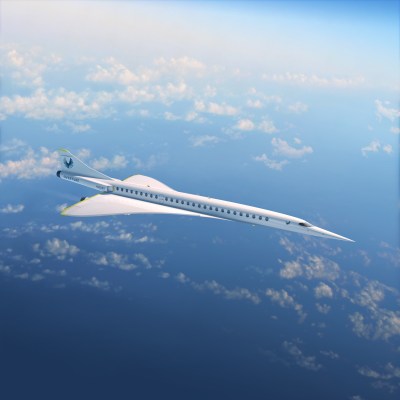While much of the world remains fixated on the competition to build autonomous cars, there’s another race that’s gaining momentum fast. It centers on supersonic jets that can fly faster than the speed of sound, or 767 miles per hour. Indeed, while most commercial airliners today fly at between 400 and 650 miles per hour — largely because it’s more economical to burn fuel more slowly — a spate of startups is borrowing from the age of the legendary Concorde to build planes that they say will fly at 1,000 miles per hour, 1,500 miles per hour, and, even in one case, at more than 3,000 miles per hour.
The last of these, and seemingly the most audacious, is Hermeus, a year-old, Atlanta-based startup that wants to build planes capable of getting from New York to London in 90 minutes. Just last week, it announced that it has raised an undisclosed amount of seed funding from Khosla Ventures. It’s also reportedly being advised by the former president of Jeff Bezos’ Blue Origin space company. (That’s also where Hermeus’ CTO, Glenn Case, spent more than four years working on propulsion design and development.)
On the other end of the spectrum are Aerion Supersonic and Spike Aerospace, both of which expect to build planes that seat around 12 people and fly at a little more than 1,000 miles per hour. Spike, an eight-year-old, Boston-based outfit, is very much focused on the luxury market. Aerion, a 17-year-old, Reno, Nev.-based concern, meanwhile wants to start with a 12-seater, then graduate to a larger and faster version of the same plane that can serve as a commercial airline.
Aerion seems to have the most momentum of the three. It’s currently collaborating with GE Aviation on its engine, Honeywell for its flight deck and Boeing on engineering, design and manufacturing. (Also worth noting: it has seen Lockheed Martin pull out of a partnership, as well as Airbus.)
Yet there is another company hoping to steal its thunder; that’s Boom, a roughly five-year-old, Denver-based, 150-person company that has raised $141 million from investors and says the capital is more than enough to begin realizing its vision of creating 55-seat airplanes that fly at twice the speed of sound, and at prices that compete with today’s business-class fares. In fact, says Boom, if all goes as planned, it will eventually make and sell planes to airlines that fly just as fast but accommodate many more people — at economy fares.
Is it possible? Perhaps, at least, for transoceanic flights, such as between New York to London, San Francisco to Tokyo and Seattle to Shanghai. Because of the continuous loud “boom” created by the shock waves of any object moving faster than the speed of sound, most countries have banned supersonic jets from flying overhead.
Of course, there are many other outstanding questions around how these startups make the economics work, whether they can be sufficiently fuel-efficient, and what it means to make flight around the globe faster — both the good and the bad.
Below, you can find excerpts from a conversation we had with Blake Scholl last week at one of our StrictlyVC events, wherein he addresses many of these same questions. We’re also posting video of the interview (below). We enjoyed the conversation; we hope you will, too.
TC: Blake, you [spent a handful of years with Amazon, working on mobile shopping, then Groupon acquired a mobile payment company you’d co-founded, Kima Labs, and you stayed on]. So you’re at Groupon. You don’t have an aerospace background. But you decide that you are the guy to start a supersonic jet company. How did that happen?
BS: It goes back to the decision I made to sell [Kima Labs] . . . I thought, is it worth what I will go through personally for the product we’re building, or should I take the great offer and live to found another day? And so I took the offer, and in reflecting on that, what I realized is, like, all startups are hard. There’s no such thing as an easy startup. And what often makes the difference is what decisions you make in those moments. What happens when you get up in the morning, and it’s a rough day — do you think, Why did I get into this thing? Or do you think, It doesn’t matter — it’s totally worth it?
So after leaving Groupon, I had a whole bunch of startup ideas, everything from rental cars, to some stuff in healthcare, and my personal passion for a long time had been airplanes. And so I put on that lens of, how happy will I be personally if it works? And so I thought, I have to look at the supersonic thing that I’ve been sort of thinking about for a decade, and do some research, and probably get it out of my system.
TC: And how did you start putting together a plan to create a jet that flies at twice the speed of sound?
BS: The first thing was to understand why it hadn’t been done already. As it turns out, there was a bunch of just false conventional wisdom — that the space is capital intensive, that it’s highly regulated, that there are only two companies on the planet that build long-range commercial aircraft. So it just scares off a lot of entrepreneurs.
[So I went back to] first principles and [thought], the Concorde was created 50 years ago with slide rules and wind tunnels. And half a century later, [I wondered] why is that not working, and what would it take, and the answer was that the fuel economy was the problem. It was too expensive to operate, [so] none of the people could afford to fly on it. And you start to run the numbers and say, well — by the way, all this stuff you can do out of Wikipedia — what would you have to do to make this economically feasible? It turns out the answer is [to make the fuel efficiency] 30% [better] versus what was designed a long time ago. And you start to realize, that doesn’t sound impossible. [So] I went off and read some aerospace textbooks, and took a design class, and started to meet everybody I could find in the industry, and I told them to shoot holes in my idea. And eventually, people started saying, ‘No, this actually makes sense.’ And so we started the company.

TC: How much of what you’re working on is built from scratch, versus building on the work of your predecessors?
BS: We’re really standing on the shoulders of all the work that’s happened in aerospace since literally the Concorde 50 years ago. And we’ve gone from aluminum as the material to carbon fiber composites; we’ve gone from defining aerodynamics in wind tunnels to being able to do it in simulation, through cloud computing; we’ve gone from engines that are loud and very inefficient to modern jet engines that are quiet and sip fuel. And it turns out that if you take all that technology that’s been proven, the big players in the space have been iteratively optimizing the same technology you’ve had since the 1960s. But you can actually take that same technology and instead of make the machine more efficient, make the human more efficient, and deploy it in service of speed. So the design of our airplane is very radical, but the fundamental technology is conventional.
TC: So the wings are in the back. And how many jet engines does the plane feature?
BS: It has three, so one under each wing, and the third one on the tail.
TC: And who is building the jet engines?
BS: We haven’t picked a provider yet, but we’re working with two of the three major jet engine companies; they are basically bidding to provide a custom engine for us.
TC: You’re starting with a prototype that’s one third the size of the eventual airplane you plan to produce. Why did you decide on 55 seats for the design of the bigger plane?
BS: If you look at it relative to the Concorde, and you say, ‘Well, it’s not enough just to do something really cool, you have to make the economics work,’ what you need to do is to make the machine efficient enough that more people can afford to fly on it; you’ve gotta get the fares down. Then the second thing you’ve got to do is right-size the airplanes. If you’re in the airline business, you live and die by something called load factor, which is the percentage of seats that are filled. And if you put too many seats on the airplane relative to the price of the seats, you fly around empty. At 55 seats . . . you can fill the seats and make money . . .by charging business class fares . . .on hundreds of routes.
TC: My understanding was that on the Concorde, the cabin was actually quite small and not necessarily very comfortable. I’m sure this is a later consideration, but have you put much thought into how the cabin will look? Does it have to be very narrow?
BS: The very first thing we built in my co-founder’s garage was a mock-up of the cabin, because it is size sensitive . . . If it’s a three- or four-hour flight, instead of a seven- or eight- or nine-hour flight, you’re still in there long enough that comfort matters. And so you can put a really nice interior in the airplane. So it’ll be sort of business-class style, with nice wide seats, big windows, plenty of room to work or relax. But when the flight is three to four hours, the seat doesn’t have to lay flat the way it does in business class today. By the time you get it down, it’s time to put it back up.

TC: So you said you’re still trying to decide on a jet engine provider. But again, this is highly ambitious. Are there any other partnerships that you’ve struck, maybe with [your investor] Japan Airlines?
BS: [I recognize that] on the face of it, it sounds like something that only big companies can do. I think Boom [requires] four ingredients to make it successful. Number one is the engineering execution on the airplanes; that’s the one thing we control directly. Number two is the customer demand, so showing that you’re building not just something that seems cool but is something that airlines really want. Number three is the supplier partnerships, so folks that build jet engines, folks that do carbon fiber composites, folks that do avionics. Unless you’re going to build the whole thing soup to nuts yourself, you need those partnerships. And then last but not least, you need a lot of capital.
And each of those components kind of wants the rest, like the investors want to know the airlines are there. The airlines always ask about the engine. The engine companies ask who the airlines are. And so it’s like a four-way chicken-and-egg problem. I often tell the team we’re in the chicken omelet business. [Laughs.]
So what you do is incrementally spiral up. The tech on the airplane is actually conventional stuff that’s flying on other airplanes today, [meaning it’s] proven safe and reliable and efficient. But the way you go to market and the way you build partnerships is completely different from the way that Boeing or Airbus would do it. We call it ‘dating engagement marriage.’ And so whether it’s an airline partnership, or a supplier partnership, you start off with something relatively loose, like a letter of intent, that allows you to go off and show credibility to other parties, and you come back and you progressively sharpen those things.
So where we stand today on the airline side of it is we’ve pre-sold 30 airplanes [to Japan Airlines and Virgin Group] at $200 million–
TC: What does that mean, pre-sold? Is that a letter of intent?
BS: It’s a bit more than a letter of intent. This is the part of the go-to-market engineering that turns out to matter. So it’s basically an option agreement with some cleverly engineered terms that I can’t go into too much. But basically, we achieve some milestones on our first prototype over the next year, and that kicks the options into expiration, and so the airlines, at the maximum point of Boom being credible, have to place an order or lose a bunch of favorable things.
For more on Boom, including how much it will need to raise, how it views its competitors, and how the company realizes its long-range vision to make the fastest flight the cheapest one, do check out our interview with Scholl below. If you’ve read the above interview, you might want to start around the 10-minute mark.
